28.04.2019
Atlas 5 rocket, U.S. Air Force satellite arrive at Cape Canaveral for June launch
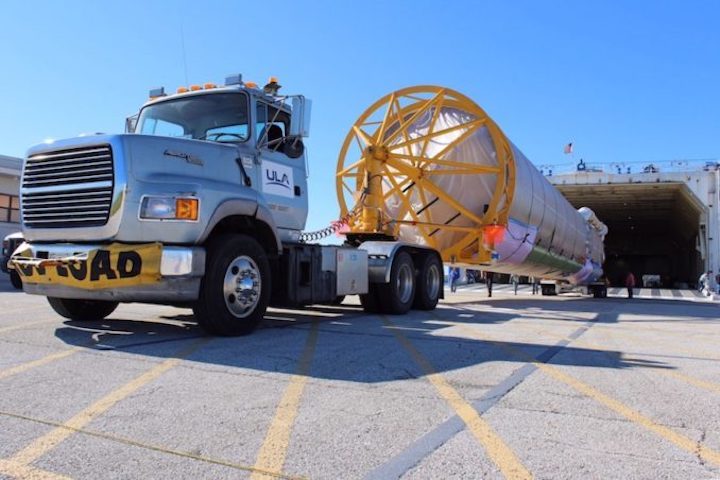
Atlas 5 rocket hardware and a U.S. Air Force communications satellite have arrived at Cape Canaveral for United Launch Alliance’s next mission, scheduled for liftoff June 27.
The equipment arrived at the Florida spaceport last weekend on separate shipments aboard an Air Force C-5 cargo plane and and ULA’s Mariner transport vessel.
The Air Force’s fifth Advanced Extremely High Frequency communications satellite rode a C-5 airlifter from Lockheed Martin’s factory in Sunnyvale, California, and arrived at Cape Canaveral on April 20. The rocket-carrying Mariner transport ship arrived at Port Canaveral on April 21 after a trip from ULA’s manufacturing plant in Decatur, Alabama, delivering the first and second stages of AEHF 5’s Atlas 5 launcher.
Teams will spend the next couple of months readying AEHF 5 and the Atlas 5 rocket for liftoff June 27 from Cape Canaveral’s Complex 41 launch pad. The mission will mark the 80th flight of an Atlas 5 rocket since 2002, and the first Atlas 5 launch of the year.
The Atlas 5, designated AV-083, will launch in its most powerful variant with five strap-on solid rocket boosters built by Aerojet Rocketdyne and a 5-meter-diameter (17.7-foot) payload fairing made by Ruag Space, a configuration known as the Atlas 5-551 that has flown nine times before. The five solid-fueled motors will provide an extra boost to the Atlas 5’s first stage, powered by a Russian-made RD-180 main engine that burns kerosene and liquid oxygen propellants.
The combined power of the boosters and main engine will give the Atlas 5 around 2.6 million pounds of thrust at liftoff.
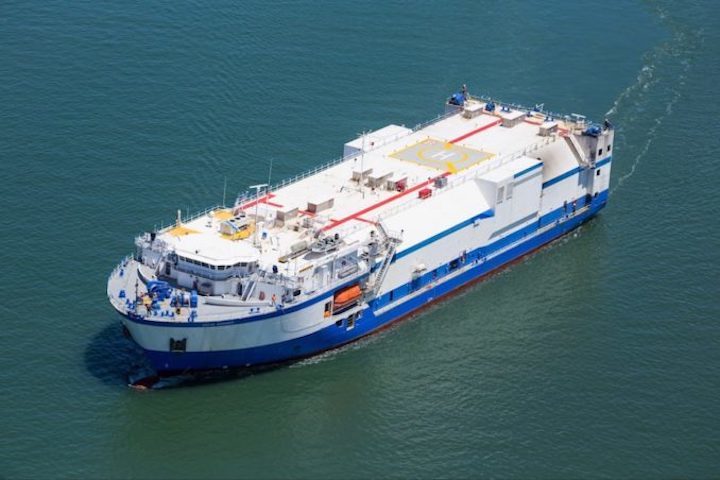
Workers unloaded the Atlas 5’s first stage and Centaur upper stage, powered by an Aerojet Rocketdyne RL10 engine, from the Mariner transport ship Monday. ULA teams transferred the first stage to the Atlas Space Operations Center for checkouts before it is stacked vertically on the mobile launch platform at the Complex 41 launch pad. The Centaur upper stage will be be integrated with an interstage adapter and the lower part of the Atlas 5’s payload shroud in the coming weeks, according to ULA.
Ground crews will hoist the Atlas 5 first stage, five solid rocket boosters and the Centaur upper stage on the mobile launch table inside the Vertical Integration Facility at Complex 41. Working in a nearby clean room, technicians will fuel the AEHF 5 satellite and encapsulate the spacecraft inside the Atlas 5’s nose cone before raising the payload atop the launcher inside the VIF.
The launch of AEHF 5 follows Atlas 5 missions that deployed four previous AEHF satellites in 2010, 2012, 2013 and 2018.
The AEHF satellites provide secure communications services to the U.S. military, working together in a network the Air Force says is resilient to jamming, cyber attacks, and even nuclear war. The AEHF spacecraft are positioned in geostationary orbit more than 22,000 miles (nearly 36,000 kilometers) over the equator, using a cross-linked architecture allowing the satellites to relay signals between one another without transmitting to ground stations.
The spacecraft are built by Lockheed Martin, with communications payloads produced by Northrop Grumman.
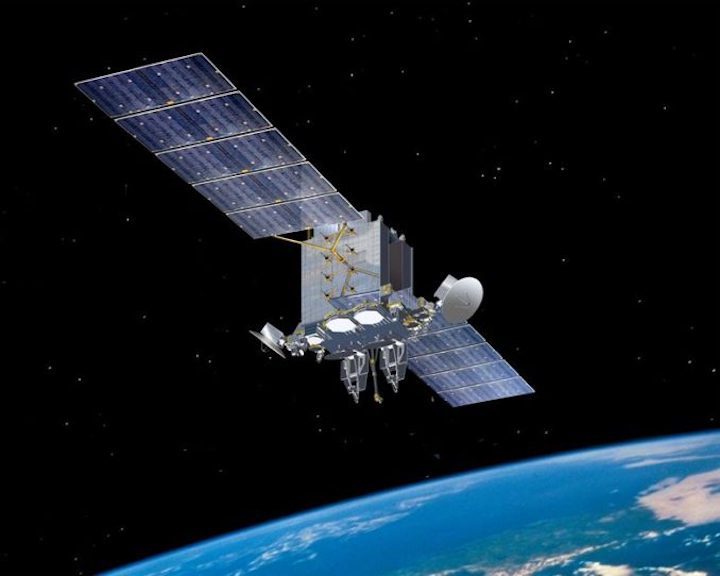
“The payload supports communication missions with increased coverage, capacity, and protections against electronic jamming which gives our warfighters the best advantage against our adversaries,” said Brig. Gen. Steve Whitney, program executive officer for the Space Production Corps.
The AEHF network is also used by Canada, the United Kingdom and the Netherlands, and replaces the Air Force’s aging Milstar constellation.
Quelle: SN
----
Update: 30.04.2019
.
Lockheed Martin's AEHF-4 On-Orbit Test Proves Successful And Marks First Of Its Kind
SUNNYVALE, Calif., April 29, 2019 /PRNewswire/ -- Lockheed Martin (NYSE: LMT) is excited to announce the successful completion of AEHF-4 spacecraft on-orbit test and available for Satellite Control Availability (SCA).
The AEHF-4 on-orbit test (A4 OOT) successfully activated the payload, built by its major subcontractor, Northrop Grumman, and demonstrated that AEHF-4 met all of its requirements. A4 OOT was the first ever test to have all six AEHF operational terminals communicating over XDR. The terminal types include AEHF SMART-T, FAB-T, MMPU, NMT, Global ASNT and ACF-IC2.
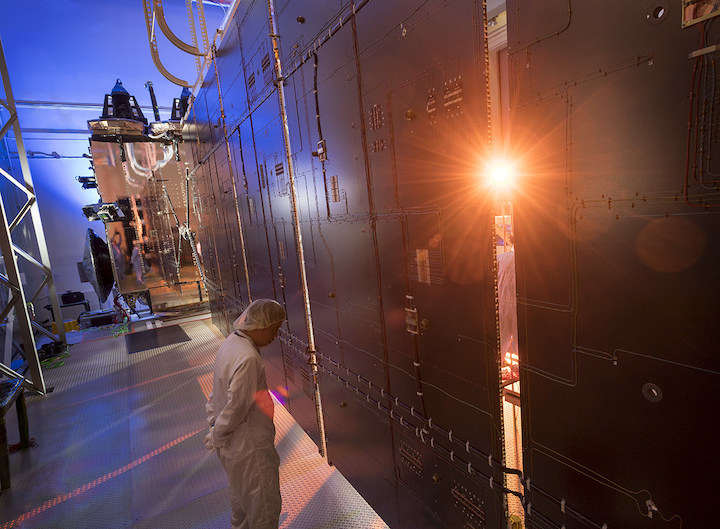
"This is a major milestone to celebrate with our customers at Space and Missiles Systems Center (SMC) the U.S. Air Force and our teammates Northrop Grumman, L3 Communications and Aerojet. As we turn our focus on launching AEHF-5 in June, one month early, I want to congratulate everyone involved in completing this one of a kind, high-performance network in space. This is a tremendous accomplishment for the AEHF program and I am proud of the team for consistently exceeding the customer's mission needs," said Mike Cacheiro, vice president of Protected Communications for Military Space.
The addition of AEHF-4 to the constellation provides a new capability of global extended data rate (XDR) communications. XDR communications provides data rates to its users five times higher than medium data rate (MDR) and 350 times higher than low data rate (LDR) communications. Milstar, the predessor to AEHF, uses both LDR and MDR communication modes to directly support the warfighter.
This was the last step before control authority of the satellite is handed over to the U.S. Air Force SMC where it will join the combined AEHF-Milstar constellation.
The AEHF constellation provides global, survivable, highly secure and protected communications for strategic command and tactical warfighters operating on ground, sea and air platforms. The jam-resistant system also serves international partners including Canada, the Netherlands and the United Kingdom.
Quelle: Lockheed Martin
----
Update: 21.05.2019
.
ULA begins stacking Atlas 5 rocket for late June launch
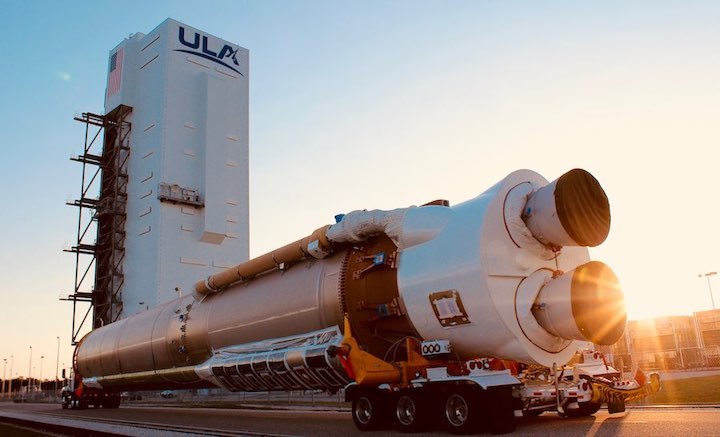
The bronze first stage of United Launch Alliance’s next Atlas 5 rocket arrived at its Cape Canaveral launch pad Friday, where it will be joined by five solid-fueled boosters, a Centaur upper stage and a U.S. Air Force communications satellite in the coming weeks ahead of liftoff set for June 27.
Riding on a specially-outfitted trailer, the rocket’s first stage was trucked from the Atlas Space Operations Center at Cape Canaveral Air Force Station to the nearby Complex 41 launch pad, where cranes lifted the 107-foot-long (32-meter) stage vertical and placed it on a mobile platform inside the Vertical Integration Facility.
ULA workers will next install five strap-on solid rocket boosters, manufactured by Aerojet Rocketdyne, around the base of the Atlas 5’s first stage. A Centaur upper stage will be hoisted atop the Atlas 5, and the rocket’s build-up at Cape Canaveral will be capped with the addition of the Air Force’s fifth Advanced Extremely High Frequency communications satellite next month.
The AEHF 5 satellite will be the sole payload on the Atlas 5 rocket when it lifts off from Florida’s Space Coast.
The launch is scheduled for June 27 during a two-hour window that opens at 6 a.m. EDT (1000 GMT).
The Atlas 5, designated AV-083, will launch in its most powerful variant with five strap-on solid rocket boosters built by Aerojet Rocketdyne and a 5-meter-diameter (17.7-foot) payload fairing made by Ruag Space, a configuration known as the Atlas 5-551 that has flown nine times before. The five solid-fueled motors will provide an extra boost to the Atlas 5’s first stage, powered by a Russian-made RD-180 main engine that burns kerosene and liquid oxygen propellants.
The combined power of the boosters and main engine will give the Atlas 5 around 2.6 million pounds of thrust at liftoff.
The June 27 launch will mark the first Atlas 5 flight of the year, and the 80th Atlas 5 launch since the rocket debuted in August 2002. It will be ULA’s third mission of 2019, following two Delta 4 launches earlier in the year.
Built by Lockheed Martin, the AEHF satellites provide secure communications services to the U.S. military, working together in a network the Air Force says is resilient to jamming, cyber attacks, and even nuclear war. The AEHF spacecraft are positioned in geostationary orbit more than 22,000 miles (nearly 36,000 kilometers) over the equator, using a cross-linked architecture allowing the satellites to relay signals between one another without transmitting to ground stations.
The AEHF 5 satellite’s launch comes after the launch of four previous AEHF spacecraft in 2010, 2012, 2013 and 2018, all on Atlas 5 rockets.
Once the Atlas 5 rocket carrying the AEHF 5 satellite blasts off from Cape Canaveral, the launch campaign for the following Atlas 5 mission will begin in July with the stacking of a new rocket assigned to send Boeing’s CST-100 Starliner crew capsule into orbit on an unpiloted test flight to the International Space Station.
The Starliner’s test flight is scheduled for liftoff no earlier than Aug. 17, and the demonstration mission will pave the way for crewed launches using the Atlas 5 rocket and Starliner capsule, perhaps as soon as late this year.
Quelle: SN
----
Update: 6.06.2019
.
ULA rocket arrives on Space Coast from Alabama factory
CAPE CANAVERAL, Fla. (FOX 35 ORLANDO) - It was a symbolic and important moment for The Boeing Company and for manned space missions, as a rocket booster arrived on Space Coast on Wednesday.
The booster was made in Alabama and came to Cape Canaveral on a cargo ship. It will carry United Launch Alliance's Starliner capsule, a competitor of SpaceX.
“It’s another milestone on the way to reclaiming that ability to be able to send humans to the International Space Station,” said Josh Barrett, a Boeing spokesman.
ULA hopes it will make history. The booster was manufactured in Decatur, Alabama. Other parts of the system come from there too. To transport the pieces to Space Coast, that literally involves a slow boat. But the company is excited because it says now things will start to move quicker -- the parts are where they need to be. They are assembled at a ULA facility near their launch site.
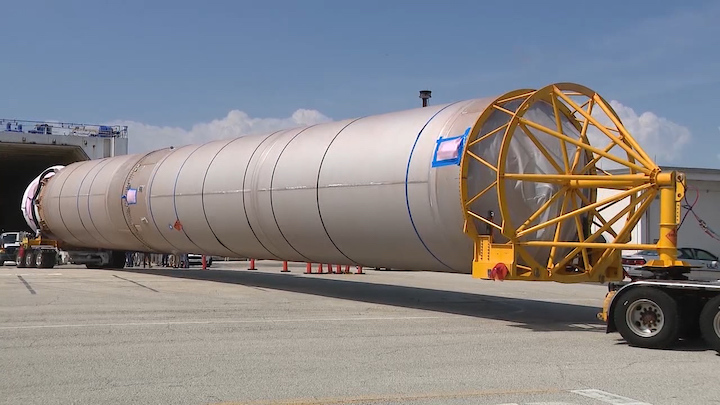
“This is the Atlas 5 booster, that’s also known as the first stage, it’s got a kerosene burning and oxygen engine on it,” Barrett said.
Quelle: FOX 35
----
Update: 11.06.2019
.
AEHF-5 Encapsulated Ahead of June Launch
LOS ANGELES AIR FORCE BASE, Calif. --
The U.S. Air Force’s fifth Advanced Extremely High Frequency (AEHF-5) communication satellite was encapsulated June 5 at Astrotech Space Operations processing facility in Florida.
The encapsulation of AEHF-5 in the United Launch Alliance Atlas V launch vehicle payload fairing is a significant milestone in AEHF-5’s launch process as it marks the completion of all major testing activity prior to launch. AEHF-5 is now ready to make the journey to Space Launch Complex-41, where it will be mated with its Atlas V launch vehicle. The launch window is currently scheduled to open at 06:00 a.m. EDT on June 27.
AEHF is a joint service satellite communications system that will provide survivable, global, secure, protected, and jam-resistant communications for high-priority military ground, sea, and air assets. The AEHF system is the follow-on to the Milstar system, augmenting, improving, and expanding the Department of Defense's MILSATCOM architecture.
AEHF-5 was procured from Lockheed Martin Space Systems Company by the MILSATCOM Systems Directorate, part of the Air Force's Space and Missile Systems Center. The MILSATCOM Systems Directorate plans, acquires, and sustains space-based global communications in support of the President, Secretary of Defense, and combat forces. The MILSATCOM enterprise consists of satellites, terminals and control stations, and provides communications for more than 16,000 air, land, and sea platforms.
Quelle: USAF
+++
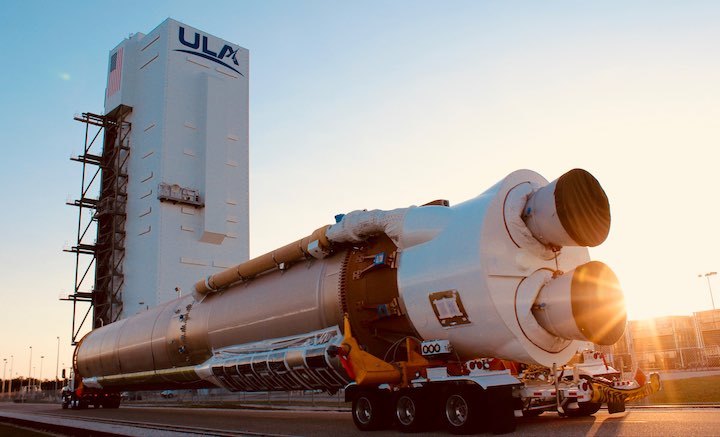
The Atlas booster stage arrives at VIF just after sunrise today. Photo: United Launch Alliance
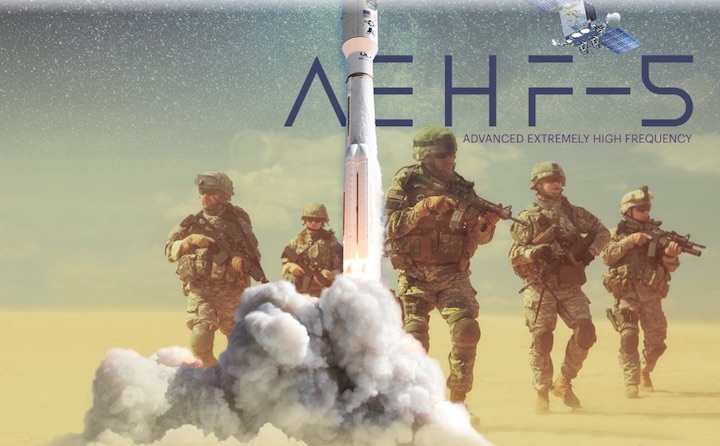
It will require a substantial amount of energy to launch the Air Force's fifth Advanced Extremely High Frequency (AEHF-5) military communications satellite to its lofty orbit above Earth, and United Launch Alliance technicians are readying the powerful Atlas V rocket that will perform the mission.
Five solid rocket boosters (SRBs) and the Centaur upper stage have been attached to the first stage at ULA’s Vertical Integration Facility (VIF) at Cape Canaveral Air Force Station, completing the initial buildup of the launch vehicle.
The work follows the first stage hoisting aboard the mobile launch platform (MLP) on May 17.
The SRBs are known as AJ-60As and each deliver 380,000 pounds of peak thrust during launch. Aerojet Rocketdyne has supplied 110 SRBs flown on Atlas V since 2003 with a flawless track record.
Mating of the Centaur continued ULA's efficiency process known as OVI, or Off-site Vertical Integration. In a separate facility last month, the Centaur was raised upright and mated to the interstage adapter that will connect to the Atlas first stage. Technicians then fitted the lower sections of the payload fairing and a stiffener deck around the stage.
The fully assembled structure was brought to the VIF for hoisting atop the rocket. The OVI eliminates multiple lifting operations at the VIF and saves several days in the pre-launch schedule.
The hydrogen-fueled Centaur will employ the long-duration coast and multiple restart capabilities of its Aerojet Rocketdyne RL10C-1 cryogenic engine to fire three times during the five-and-a-half-hour launch sequence to deliver the AEHF-5 satellite to a highly optimized geosynchronous transfer orbit.
With the Atlas V now assembled, the rocket will come alive with the application of power to undergo extensive testing to ensure systems are checked and validated for the launch.
Later in June, the encapsulated payload will arrive at the VIF from its payload processing facility and lifted atop the rocket, completing the 197-foot-tall Atlas V.
ULA is scheduled to launch the AEHF-5 spacecraft for the U.S. Air Force Space and Missile Systems Center on June 27.
Quelle: ULA
----
Update: 24.06.2019
.
Next Atlas 5 launch delayed by battery failure
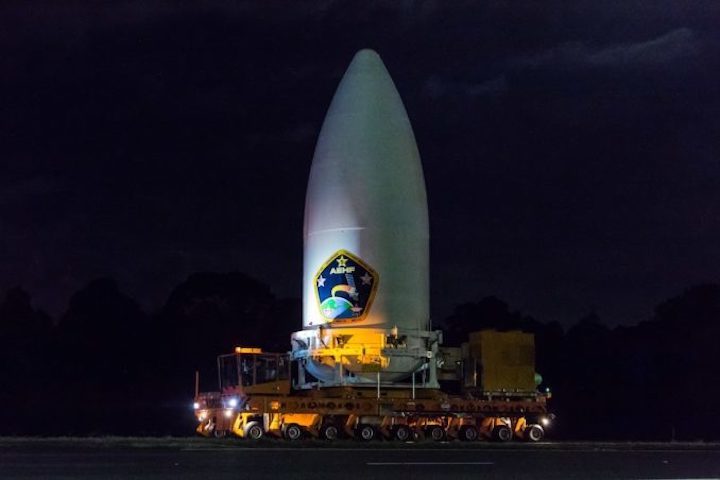
The next launch of United Launch Alliance’s Atlas 5 rocket with the U.S. Air Force’s fifth Advanced Extremely High Frequency communications satellite, previously scheduled for Thursday, has been delayed to no earlier than July 9 to replace a failed battery on the vehicle.
In a statement Sunday, ULA said the launch was delayed “due to a vehicle battery failure discovered during final processing.”
ULA crews at Cape Canaveral were preparing for liftoff at 8:27 a.m. EDT (1227 GMT) Thursday with the Lockheed Martin-built nuclear-hardened, jam-resistant
AEHF 5 spacecraft designed to provide secure communications for the U.S. military and the president.
“Additional time is needed for the technical team to complete the evaluation of the issue and replace the battery,” ULA said in a statement.
A launch window for the Atlas 5’s earliest launch opportunity July 9 has not been announced, but the window is expected to open at approximately 7:45 a.m. EDT (1145 GMT).
The Atlas 5 rocket is fully assembled inside the Vertical Integration Facility, or VIF, at Cape Canaveral’s Complex 41 launch pad. Since the Atlas 5’s first stage arrived at the VIF last month, workers have installed the rocket’s Centaur upper stage, five solid rocket boosters and the Atlas 5’s payload shroud containing the AEHF 5 spacecraft.
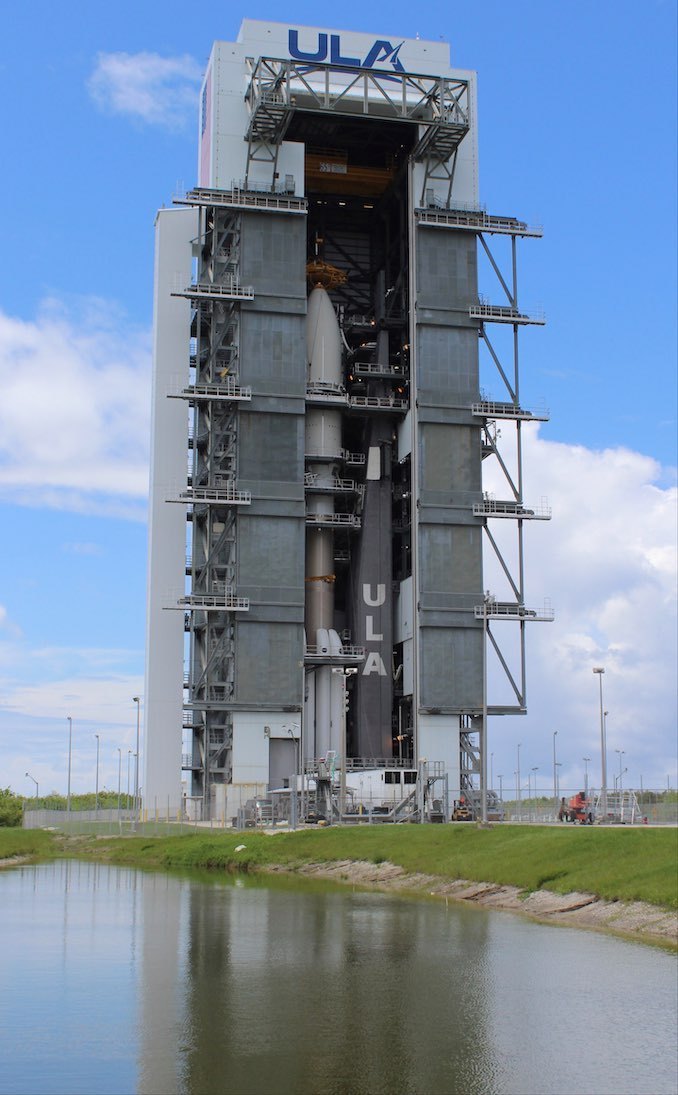
The AEHF 5 satellite’s launch comes after the launch of four previous AEHF spacecraft in 2010, 2012, 2013 and 2018, all on Atlas 5 rockets.
The Atlas 5’s Centaur upper stage will fire its RL10 engine three times to send the AEHF 5 spacecraft into an elliptical “high-energy” geostationary transfer orbit ranging from 8,970 miles (14,435 kilometers) to 21,933 miles (35,298 kilometers) in altitude, with an inclination of 9.95 degrees.
The rocket will deploy the AEHF 5 spacecraft around 5 hours, 40 minutes, after liftoff. The satellite’s own engine will guide the craft into a circular geostationary orbit more than 22,000 miles over the equator, where AEHF 5 will join its predecessors in the secure communications network.
After AEHF 5’s launch, ULA plans to begin stacking its next Atlas 5 rocket inside the VIF at Complex 41 for the first unpiloted test flight of Boeing’s CST-100 Starliner crew capsule, which is scheduled for liftoff in September.
Quelle: SN
----
Update: 13.07.2019
.
ULA delays Atlas 5 launch to August
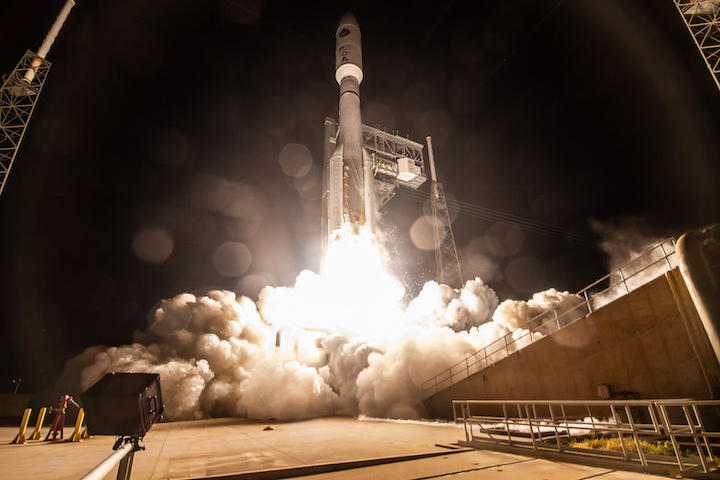
United Launch Alliance is pushing back its next Atlas 5 launch from Cape Canaveral until no earlier than Aug. 8, allowing time for engineers to ensure an unspecified anomaly during component testing at a supplier will have no impact on the Atlas 5’s mission to place a U.S. Air Force communications satellite into orbit.
ULA announced the delay Thursday, citing “an anomaly during component testing at a supplier which has created a cross-over concern.”
The Atlas 5 rocket was scheduled to lift off from Cape Canaveral next Wednesday, July 17, with the Air Force’s fifth Advanced EHF communications satellite.
“Additional time is needed for the team to review the component anomaly and determine if any corrective action is required to the launch vehicle,” ULA said in a brief statement.
United Launch Alliance did not identify which supplier or component were responsible for the delay, which follows a previous postponement from the Atlas 5’s original target launch date of June 27 in order to replace a failed battery on the rocket.
ULA also did not announce a time for a potential launch attempt Aug. 8, but a countdown on that date is expected to have a two-hour window opening at approximately 5:50 a.m. EDT (0950 GMT).
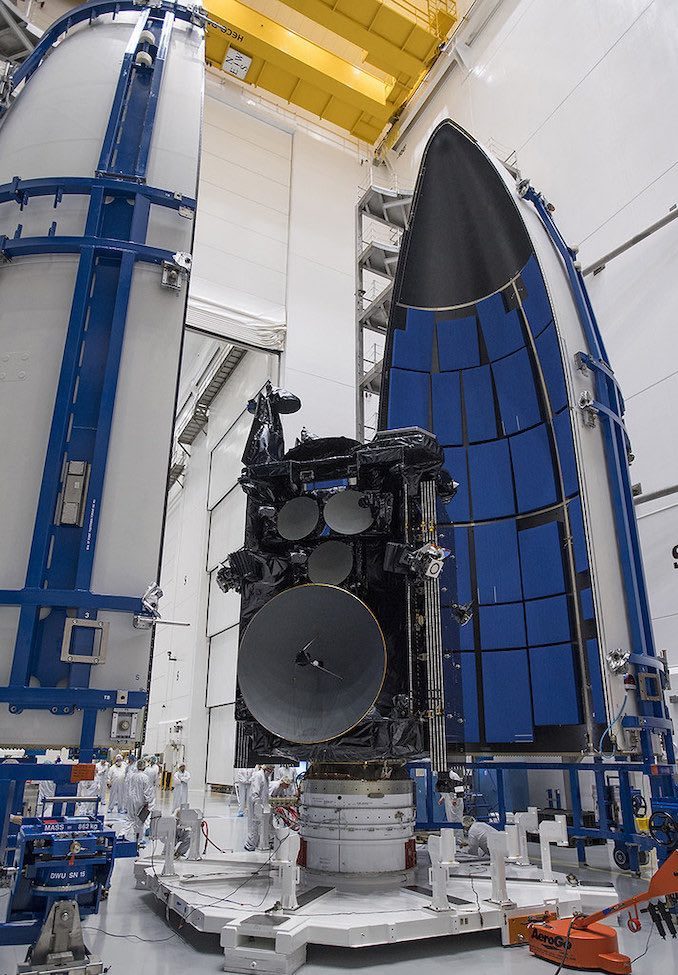
The Atlas 5 rocket is fully assembled inside the Vertical Integration Facility, or VIF, at Cape Canaveral’s Complex 41 launch pad. After the Atlas 5’s first stage arrived at the VIF in May, workers installed the rocket’s Centaur upper stage, five solid rocket boosters and the Atlas 5’s payload shroud containing the Lockheed Martin-built AEHF 5 spacecraft.
The AEHF 5 satellite’s launch comes after the launch of four previous AEHF spacecraft in 2010, 2012, 2013 and 2018, all on Atlas 5 rockets.
The U.S. military, the president and other government leaders rely on the AEHF network for secure video, voice and data communications. The AEHF satellites are hardened to operate in nuclear war and are resistant to jamming, providing reliable global links among strategic forces and commanders around-the-clock.
Military forces from Canada, the Netherlands and the United Kingdom also have access to the AEHF satellite network.
Quelle: SN
----
Update: 2.08.2019
.
A new launch date for the Air Force’s next comms satellite
WASHINGTON — Officials at the U.S. Air Force’s Space and Missile Systems Center said that despite recent delays, they expect an anti-jamming communications satellite to launch as early as Aug. 8
The satellite in question is the fifth satellite in the Advanced Extremely High Frequency system, a constellation that will ultimately be composed of six satellites providing highly robust, anti-jamming satellite communications for the military and high priority national leaders. The first AEHF was launched back in 2010. Lockheed Martin is the program’s prime contractor.
The satellite was slated to be launched into orbit from Florida June 27, but was delayed after a vehicle battery failure was found on a United Launch Alliance Atlas V rocket to carry AEHF-5 into orbit. The launch was then rescheduled for July 17, giving the technical time to analyze the problem and replace the battery. But less than a week before the launch, it was delayed again “due to an anomaly during component testing at a supplier which has created a cross-over concern.”
“During final acceptance testing of the component, the support equipment measured off-nominal voltage. The team is reviewing the data and inspecting the hardware to determine root cause,” Heather McFarland, a spokewoman for ULA, told C4ISRNET.
The launch has been rescheduled for Aug. 8.
Officials at the Space and Missile Systems Center said there will be no impacts on the program if the satellite is launched in August, although they didn’t say whether further delays would have an impact.
“There are no impacts through the month of August. The spacecraft is in a safe environment on the Atlas V,” the center said in a statement.
The Space and Missile Systems Center also said on-orbit test teams have been aligned to the new schedule created by the delay, and since there was no set date for the Air Force taking over the satellite, that action by definition can’t be pushed back. They also noted that this delay would not affect the launch of AEHF 6, which has not been scheduled yet.
Quelle: DefenseNews
----
Update: 7.08.2019
.
Upcoming Atlas 5 mission will launch Air Force cubesat before it releases main payload
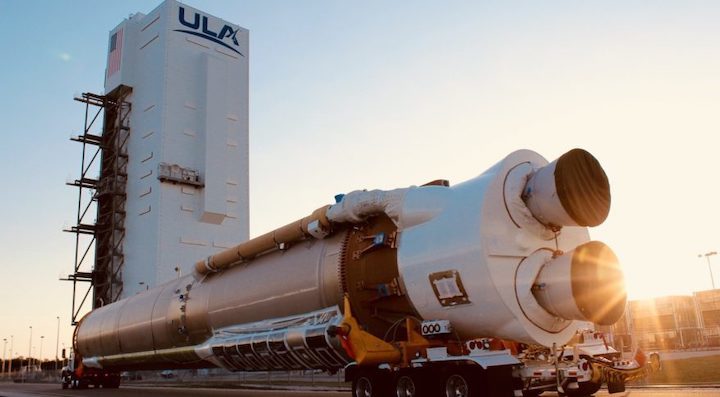
WASHINGTON — A United Launch Alliance Atlas 5 rocket scheduled to launch a $1.1 billion military communications satellite on Thursday will carry an experimental cubesat as a rideshare payload on the back of the Centaur, the Atlas’ upper stage.
The main payload is the fifth Lockheed Martin-built Advanced Extremely High Frequency satellite, or AEHF-5. For this mission, the Air Force integrated a 12U cubesat on the Centaur’s aft bulkhead carrier. The rideshare payload will be separating before the primary payload separates, said Col. Shane Clark, AEHF-5 mission director at the Air Force Space and Missile Systems’ Center Launch Enterprise Systems Directorate.
“It’s the first time SMC separates a rideshare payload prior to the anchor mission,” Clark said on Monday during a conference call. The cubesat will be used to test orbital debris tracking technologies.
The Atlas 5 aft bulkhead carrier was originally developed for the National Reconnaissance Office to take advantage of excess capacity on big rocket to put small payloads into orbit. A newly created Launch Enterprise Manifest Office married up the the cubesat with the Centaur for the AEHF-5 mission. Clark said this is the first multi-manifest space vehicle integration executed by the new office.
The mission is on track to lift off from Space Launch Complex-41 at Cape Canaveral Air Force Station on Thursday. The rocket will fly in its most powerful configuration, the Atlas 5 551. The AEHF satellites in geosynchronous Earth orbit provide nuclear-survivable, protected communications for strategic command and tactical warfighters. They are used by the U.S. military and international partners Canada, the Netherlands and the United Kingdom.
Clark said the Air Force wants to continue to find ways to use space vehicle capacity as efficiently as possible. “We haven’t in the past separated rideshares before the anchor mission,” he said. “The mission design of this one allows us to do that.” The new manifest office at SMC will be responsible for integrating rideshares “when we have anchor missions that have some excess capability.”
Gary Wentz, ULA’s vice president for government and commercial programs, said he does not anticipate any further delays to the AEHF-5 mission that was originally scheduled for June 27. The date had to be pushed back after a component failed during final acceptance tests. “The teams removed the suspect hardware from all our launch vehicles,” said Wentz. “We are in the process of incorporating some minor changes to the hardware. We have retested and reinstalled the hardware on the vehicle.”
AEHF-5 will be ULA’s 134th launch since the company was formed in 2006. It will be the ninth for the Atlas 5 in the 551 configuration with five solid rocket boosters.
Quelle: SN
----
Update: 8.08.2019 / 7.30MESZ
.
ULA Primed for 80th Atlas V Launch with USAF 'AEHF-5' Satellite Thursday Morning
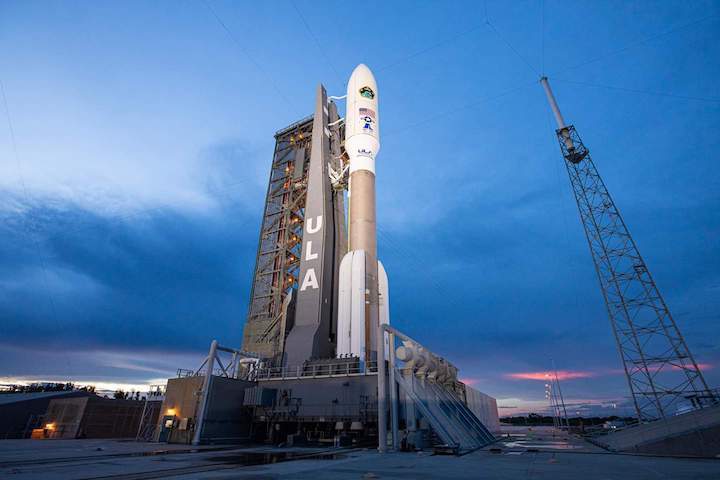
For the tenth time in its history, United Launch Alliance (ULA) will fly the most powerful member of its Atlas V fleet at 5:44 a.m. EDT Thursday, 8 August, when a 551 booster—boasting a 17.7-foot-diameter (5-meter) payload fairing, five strap-on solid-fueled rockets and a single-engine Centaur upper stage—rises from Space Launch Complex (SLC)-41 at Cape Canaveral Air Force Station, Fla.
Previously labeled “the bruiser” by ULA CEO Tory Bruno, the 551 will carry the fifth Advanced Extremely High Frequency (AEHF-5) military communications satellite. Built by Lockheed Martin, this satellite will join its four cousins, launched between August 2010 and last October, in providing fast and secure communications to link civilian leaders with military assets, anywhere in the world. Thursday’s mission also marks the 80th launch by an Atlas V, tracing an ancestry (and an impressive success rate) back to its maiden flight in August 2002.
Quelle: AS
+++
United Launch Alliance Successfully Launches Communications Satellite for the U.S. Air Force Space and Missile Systems Center
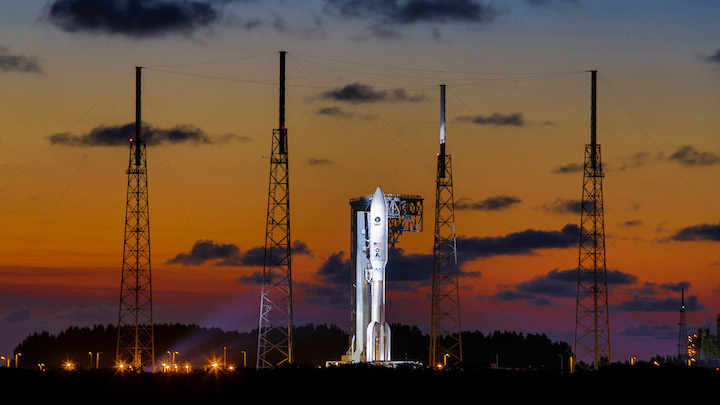
Cape Canaveral Air Force Station, Fla., (Aug. 8, 2019) -- A United Launch Alliance (ULA) Atlas V rocket carrying the fifth Advanced Extremely High Frequency (AEHF) communications satellite for the U.S. Air Force Space and Missile Systems Center lifted off from Space Launch Complex-41 on August 8 at 6:13 a.m. EDT. This marked the 80th successful launch of an Atlas V rocket, which has successfully launched and precisely delivered the entire AEHF constellation on orbit. ULA has a track record of 100 percent mission success with 134 successful launches.
“The ULA and supplier teams continue to demonstrate the highest dedication to mission success as we overcame several technical issues during the last few weeks,” said Gary Wentz, ULA vice president of Government and Commercial Programs. “Thank you to the entire team and our government mission partners for the outstanding partnership and teamwork to deliver these critical payloads to orbit.”
Producing more than two and a half million pounds of thrust at liftoff, the Atlas V 551 configuration rocket is the most powerful in the Atlas V fleet. The 551 rocket has launched groundbreaking missions for our nation—from the critically important MUOS constellation to historic science missions including New Horizons, the first mission to Pluto and the Juno mission to Jupiter.
The AEHF system, developed by Lockheed Martin, provides vastly improved global, survivable, protected communications capabilities for strategic command and tactical warfighters.
This mission launched aboard an Atlas V 551 configuration vehicle, including a 5-meter large Payload Fairing (PLF) and standing at 197 ft. tall. The Atlas booster for this mission was powered by the RD AMROSS RD-180 engine. Aerojet Rocketdyne provided the five AJ-60A solid rocket boosters (SRBs) and RL10C-1 engine for the Centaur upper stage.
ULA's next launch is the GPS III SV02 mission for the U.S. Air Force Space and Missile Systems Center aboard the final Delta IV Medium rocket. The launch is scheduled for August 22 at Space Launch Complex-37 at Cape Canaveral Air Force Station, Fla.
With more than a century of combined heritage, United Launch Alliance is the nation’s most experienced and reliable launch service provider. ULA has successfully delivered more than 130 satellites to orbit that aid meteorologists in tracking severe weather, unlock the mysteries of our solar system, provide critical capabilities for troops in the field and enable personal device-based GPS navigation.
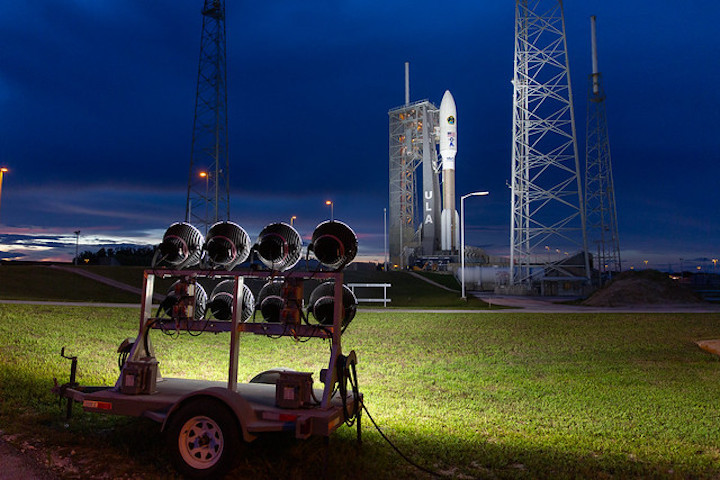
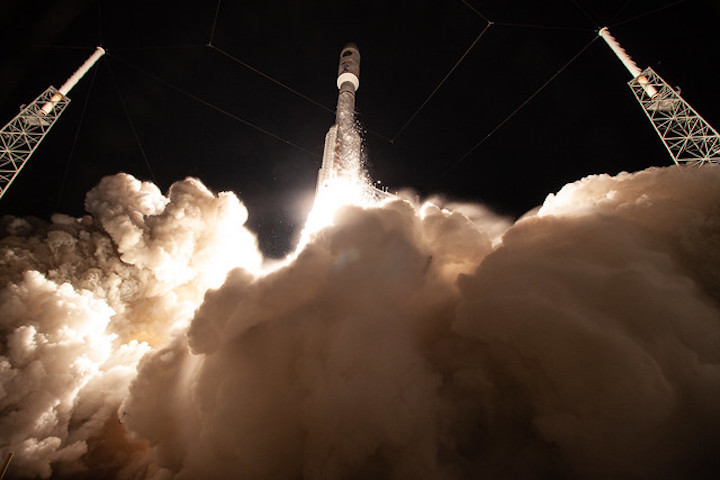
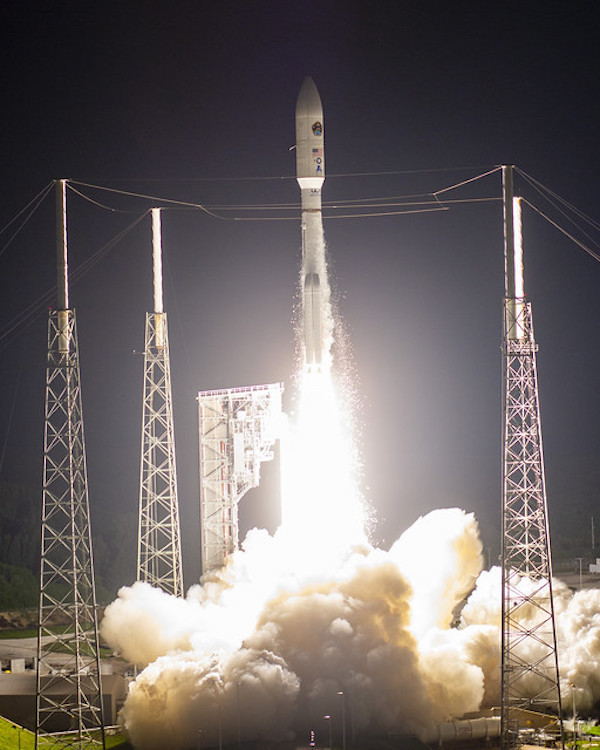
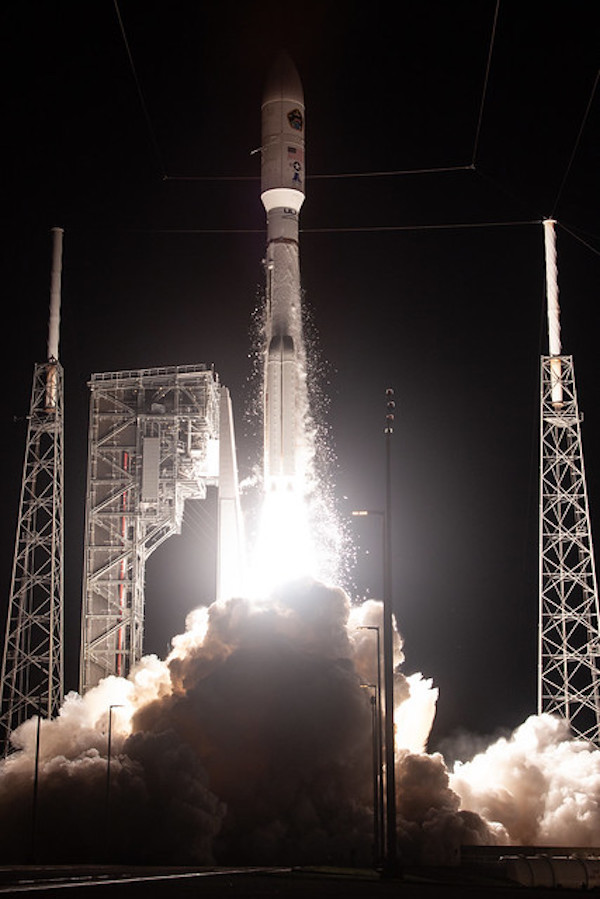
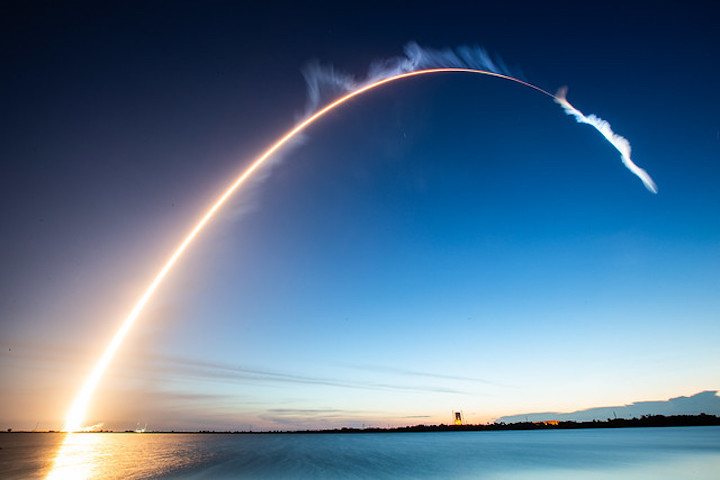
Quelle: ULA
